Alessandro Marin Vargas
Latent Exploration for Reinforcement Learning
May 31, 2023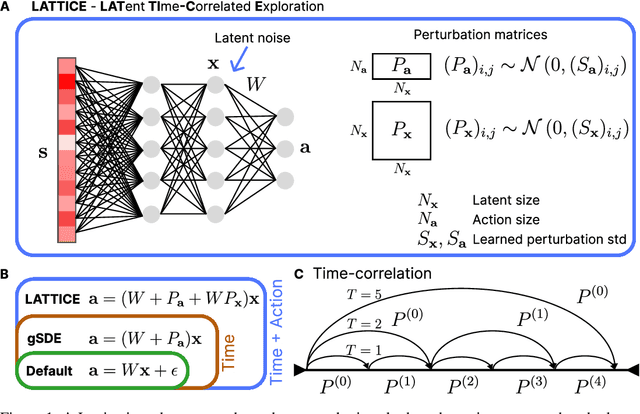


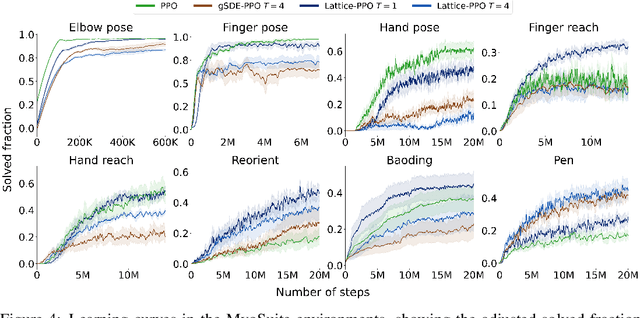
Abstract:In Reinforcement Learning, agents learn policies by exploring and interacting with the environment. Due to the curse of dimensionality, learning policies that map high-dimensional sensory input to motor output is particularly challenging. During training, state of the art methods (SAC, PPO, etc.) explore the environment by perturbing the actuation with independent Gaussian noise. While this unstructured exploration has proven successful in numerous tasks, it ought to be suboptimal for overactuated systems. When multiple actuators, such as motors or muscles, drive behavior, uncorrelated perturbations risk diminishing each other's effect, or modifying the behavior in a task-irrelevant way. While solutions to introduce time correlation across action perturbations exist, introducing correlation across actuators has been largely ignored. Here, we propose LATent TIme-Correlated Exploration (Lattice), a method to inject temporally-correlated noise into the latent state of the policy network, which can be seamlessly integrated with on- and off-policy algorithms. We demonstrate that the noisy actions generated by perturbing the network's activations can be modeled as a multivariate Gaussian distribution with a full covariance matrix. In the PyBullet locomotion tasks, Lattice-SAC achieves state of the art results, and reaches 18% higher reward than unstructured exploration in the Humanoid environment. In the musculoskeletal control environments of MyoSuite, Lattice-PPO achieves higher reward in most reaching and object manipulation tasks, while also finding more energy-efficient policies with reductions of 20-60%. Overall, we demonstrate the effectiveness of structured action noise in time and actuator space for complex motor control tasks.
DMAP: a Distributed Morphological Attention Policy for Learning to Locomote with a Changing Body
Sep 28, 2022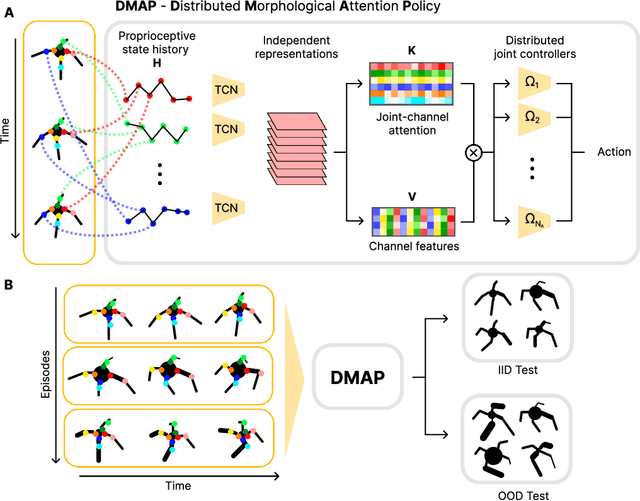

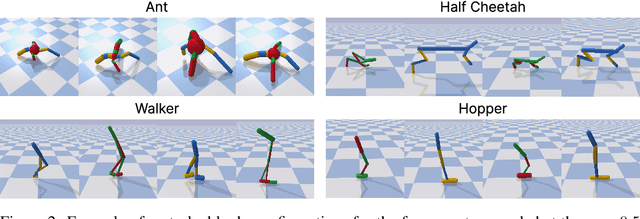

Abstract:Biological and artificial agents need to deal with constant changes in the real world. We study this problem in four classical continuous control environments, augmented with morphological perturbations. Learning to locomote when the length and the thickness of different body parts vary is challenging, as the control policy is required to adapt to the morphology to successfully balance and advance the agent. We show that a control policy based on the proprioceptive state performs poorly with highly variable body configurations, while an (oracle) agent with access to a learned encoding of the perturbation performs significantly better. We introduce DMAP, a biologically-inspired, attention-based policy network architecture. DMAP combines independent proprioceptive processing, a distributed policy with individual controllers for each joint, and an attention mechanism, to dynamically gate sensory information from different body parts to different controllers. Despite not having access to the (hidden) morphology information, DMAP can be trained end-to-end in all the considered environments, overall matching or surpassing the performance of an oracle agent. Thus DMAP, implementing principles from biological motor control, provides a strong inductive bias for learning challenging sensorimotor tasks. Overall, our work corroborates the power of these principles in challenging locomotion tasks.
Measuring and modeling the motor system with machine learning
Mar 22, 2021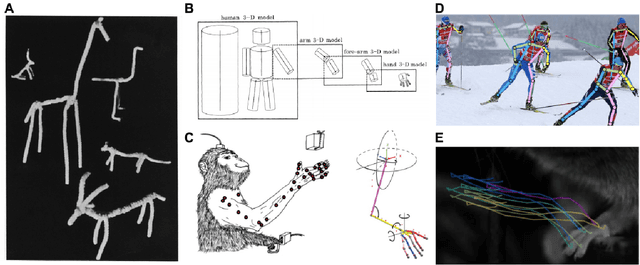
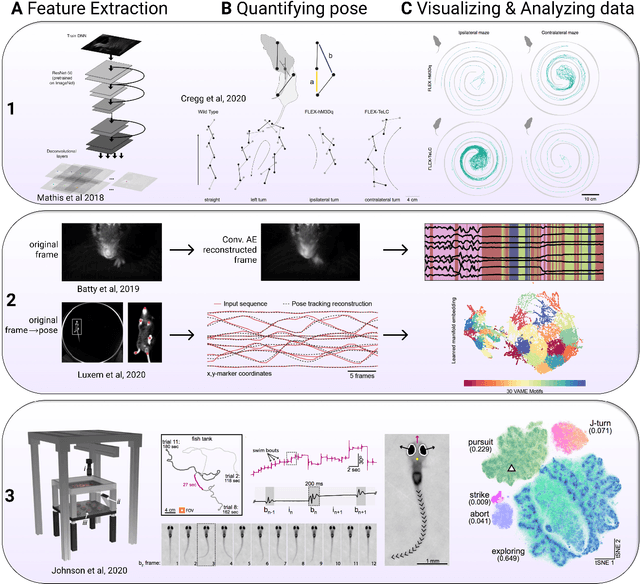
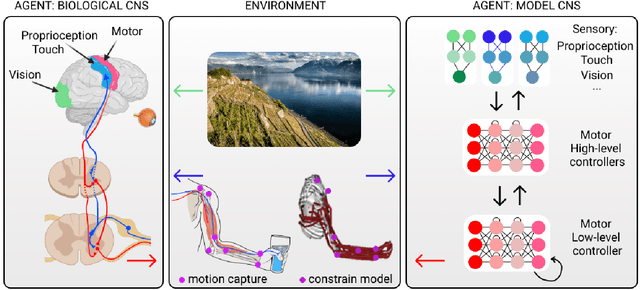
Abstract:The utility of machine learning in understanding the motor system is promising a revolution in how to collect, measure, and analyze data. The field of movement science already elegantly incorporates theory and engineering principles to guide experimental work, and in this review we discuss the growing use of machine learning: from pose estimation, kinematic analyses, dimensionality reduction, and closed-loop feedback, to its use in understanding neural correlates and untangling sensorimotor systems. We also give our perspective on new avenues where markerless motion capture combined with biomechanical modeling and neural networks could be a new platform for hypothesis-driven research.
 Add to Chrome
Add to Chrome Add to Firefox
Add to Firefox Add to Edge
Add to Edge